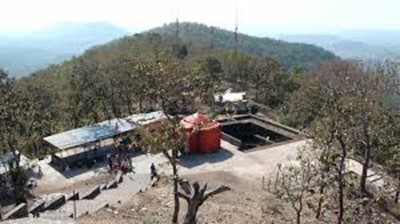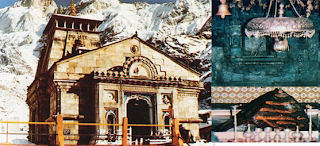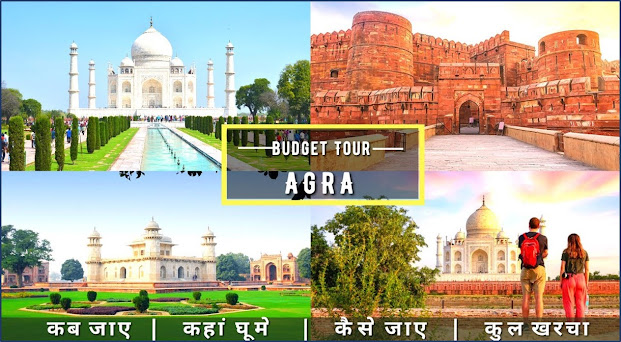Mahabaleshwar was established as a health center in 1829 AD. It was a prison for Chinese & Malay prisoners from 1834 to 1864. Prison power was 120 prisoners.
The inmates introduced the planting of red potatoes, strawberries and weaving sugarcane and bamboo baskets. Many prisoners remained in Mahabaleshwar after their release
A Brief History
Maharaja Pratapsinha of Sara
(1818 to 1839) developed a plan to develop M'war as a health center. Mr. John
Malcolum, the first emperor to visit Mahabaleshwar in 1828, founded M'war in
1829. Sir Charles Malet, the first Pune darbar of Peshwas in 1791, happened to
be the first European to set foot on the plateau.
Friends The various points in Mahabaleshwar must be considered.
Here I give details on some of these points
Wilson Point
Also called the Sunrise point.
Very high point. 4710 ft above sea level. Great plain. There are three circular
platforms to build to see the sunrise. You are advised to watch the sunrise
from platform no: 2. You can also see the sunset from this point.
High degree
The second high point. Introduce
the panoramic view of the green carpet. You can see the rising and setting of
the sun from this point.
Elphiston's point
The first point of the M'war /
overlooking the two valleys, the left one & the right side.
Marjorie Point
Shoes are several distances from
the Sahyadri range.
Castle Rock
On the way to Arthur's seat it
shows the valley of Savitri.
Arthur's chair
Queen of all points. Some compare
the placement on the south side to the world-famous Colorado Grand Canyon.
EU.SA. It is interesting to see the empty desert valley of Savitri on the left
and the shallow green valley on the right.
It is even more interesting to know that
Arthur's seat is the only place that shows the geographical division of kokan
& Desh (Deccan), two Mahabaleshwar places, so clear and close. As you walk
down the stairs you come across a spring known as the Tiger spring which is
supposed to be the source of the Savri river.
Immediately under the seat is a
window area. You have to go through the steps to reach the point of the window.
It offers a spectacular view of
the Krishna valley and the deep waters of the dhom dam. From the south side, it
looks like an elephant's head. There is also the point of echoing.
The point of Baghdad
Very good point. It passes
through the village of Moleshware on the way. You see a magnificent view of the
water behind the Koona dam on your left, the solshi river in front of you, and
the small villages as if you were sitting on the banks of the river and the
great green slopes of the M'war plain to your right.
Babington Point
Introduces the saddleback &
Koyna valley view.

Northcote Point
Introduce the koana valley view
& back seat.
Falkland Point
Below it, Artists Point, also
known as nature lovers, spans the valley below you.
Carnac Point
In the same way the Falkland
point.
Fitzgerald Point
A similar view of the Bombay
point.
Bombay Point
The most famous sunset point. It
shows the scope of Sahyadri koyana valley & Pratap Garh.

How to Get to Mahabaleshwar:
Distance: Mumbai to Mahabaleshwar
by Mahad at 220 kms
Mumbai to Pune at 180 kms
Pune to Mahabaleshwar at 120 kms.
Panchgani goes to Mahabaleshwar
in 20 kms.
Location: A beautiful green plain
of about 150 sq. M. Kms.
Height: 4500 meters above sea
level.
Climate:
It will never be too hot
because of the altitude. Never get too cold because of the proximity of The Arabian Sea. High-temperature time is short.
Seasons:
October, Diwali &
Xmas holidays and summer. Hotels are open all year round even during the rainy
season.
The Mahabaleshwar Forest is vast
and produces many commercial and medicinal plants and plants. Wildlife is
limited to foxes, foxes, and wild boars.
Deers and bison are found in the Brahma Aranya area. Panthers are rare. A popular bird in Urdu poetry, Bulbul is found all over the plain.
The Mahabaleshwar climate is also healthy and
contains 20% oxygen which is usually caused by late summer misty rains and
early rains when the plateau is covered with thick mist. Water contains a
small percentage of iron that helps increase hemoglobin in the blood.









